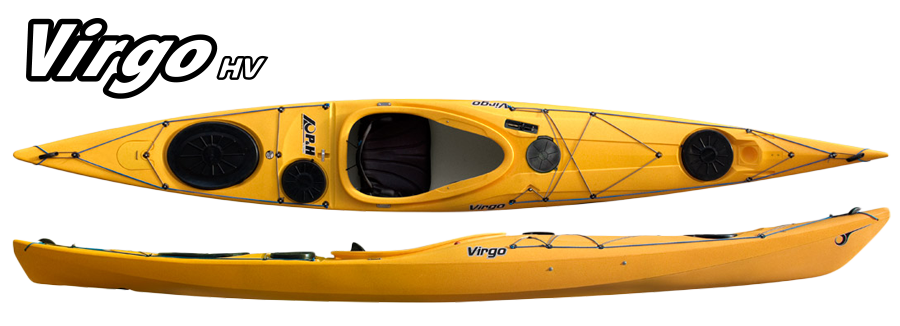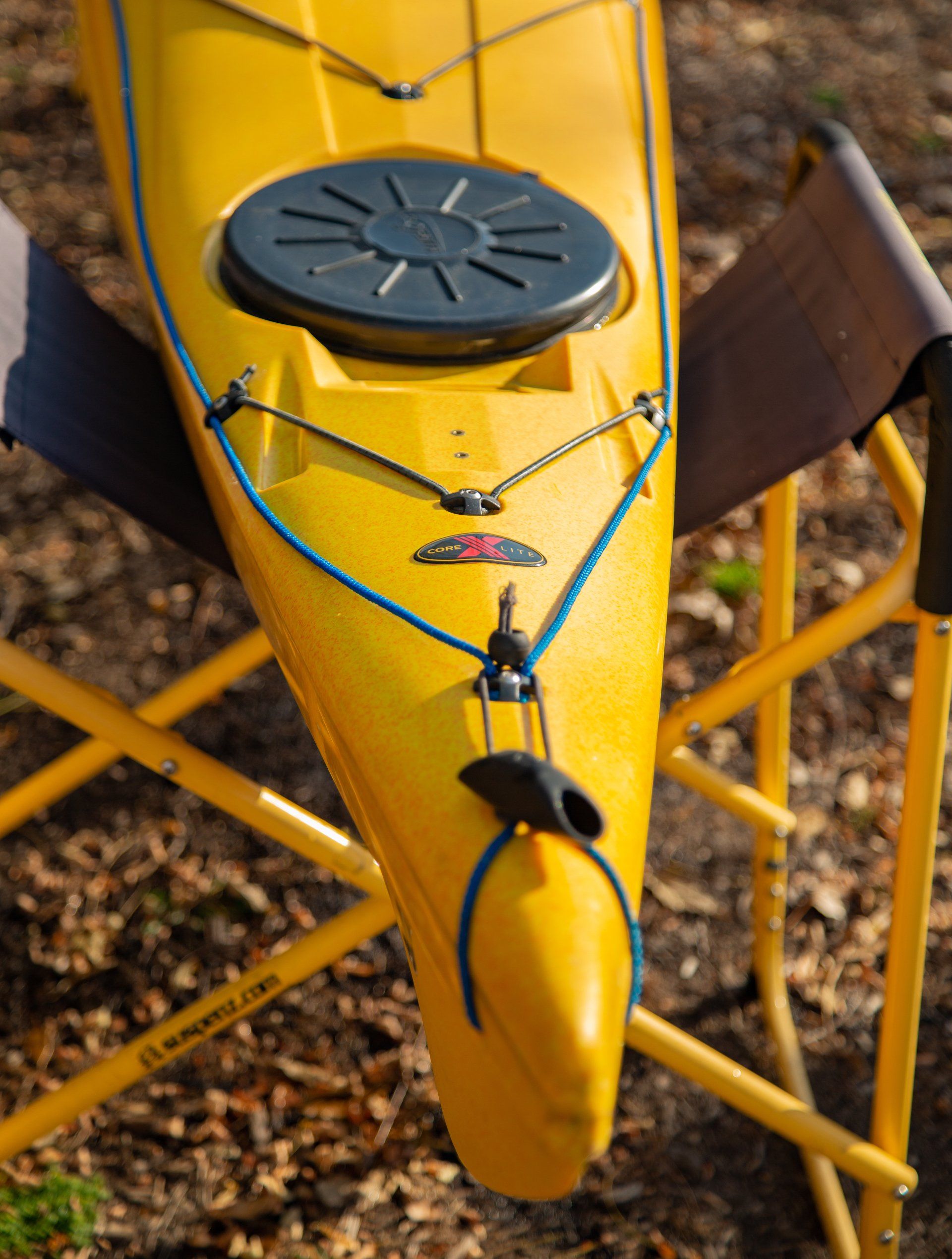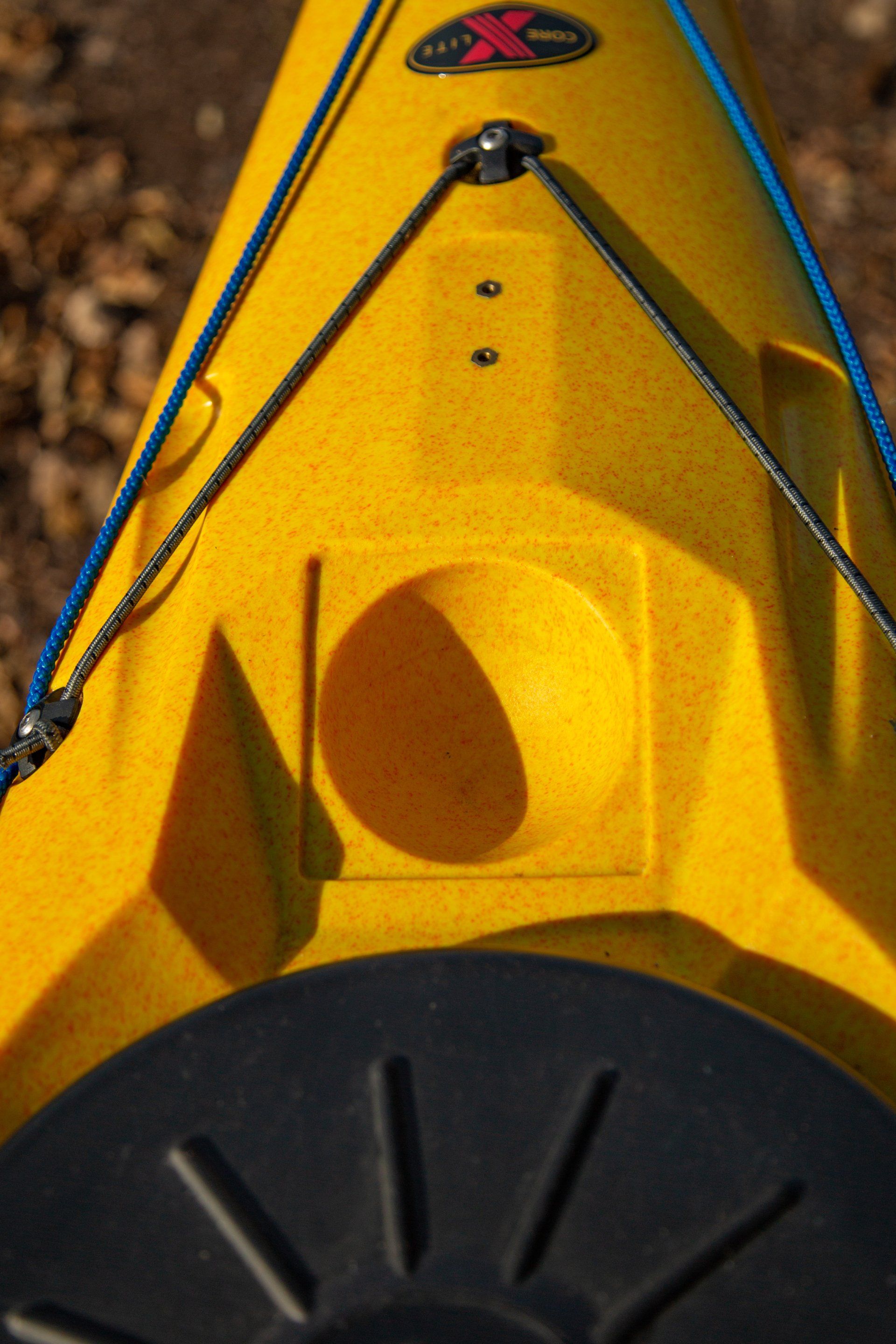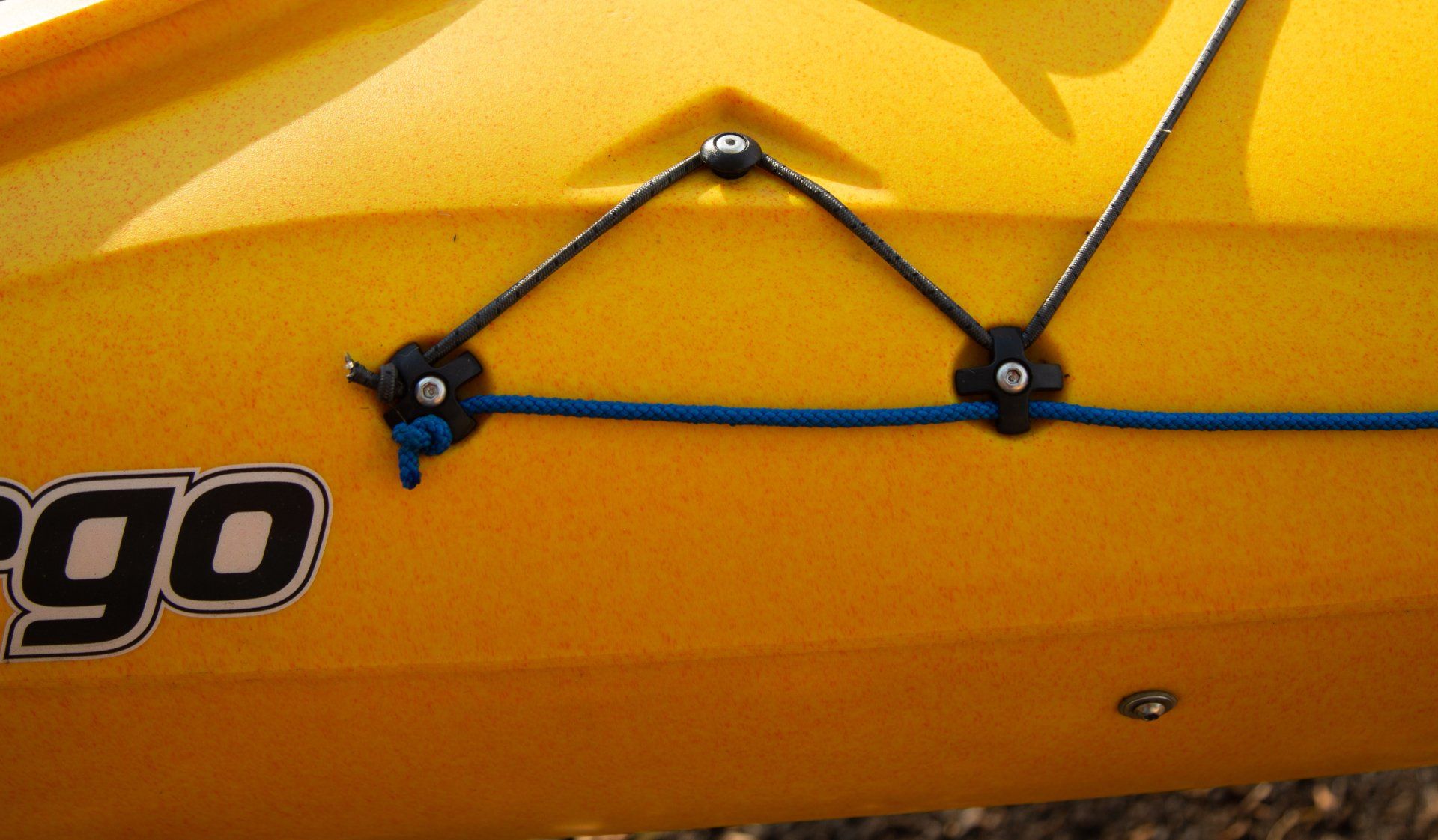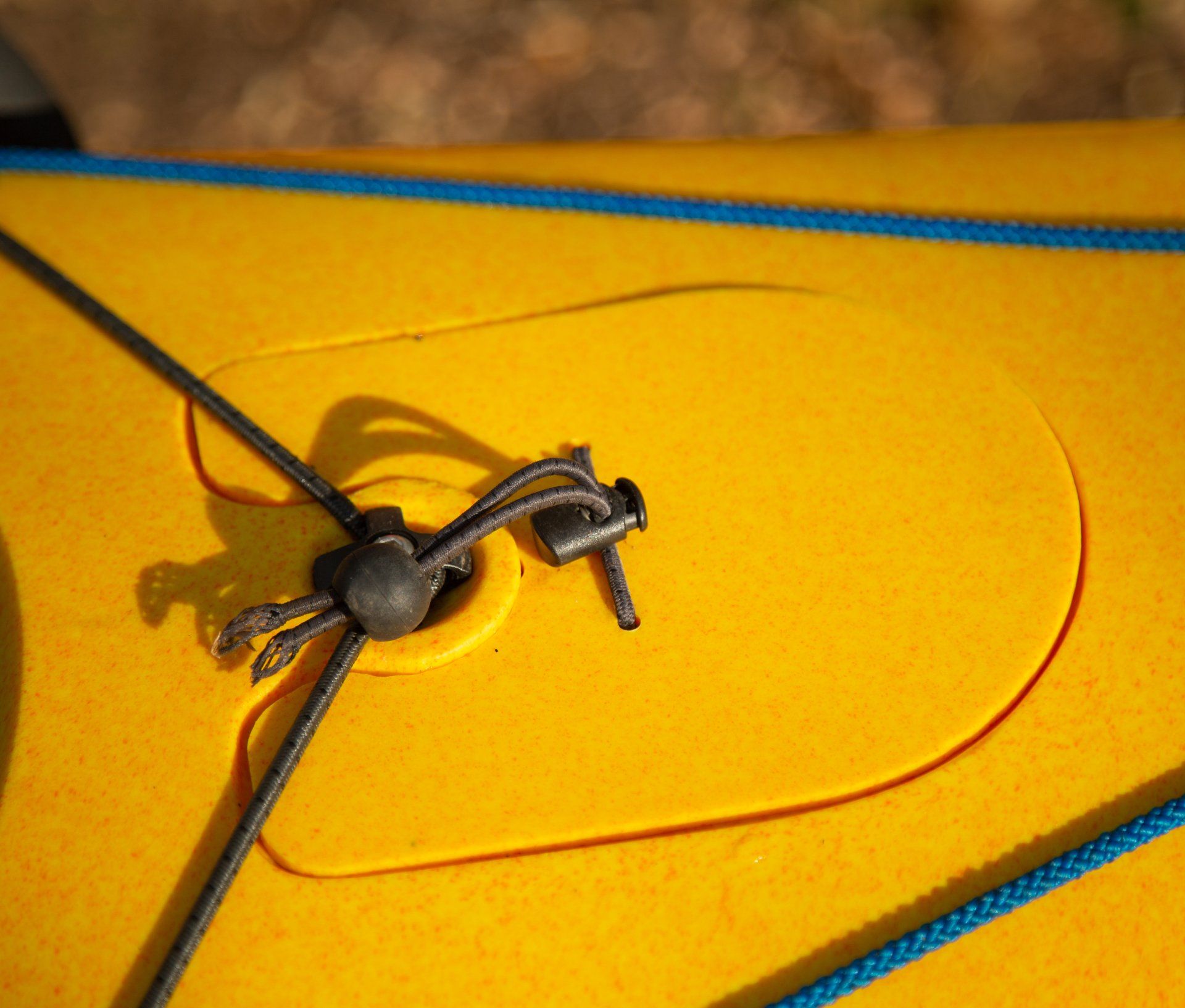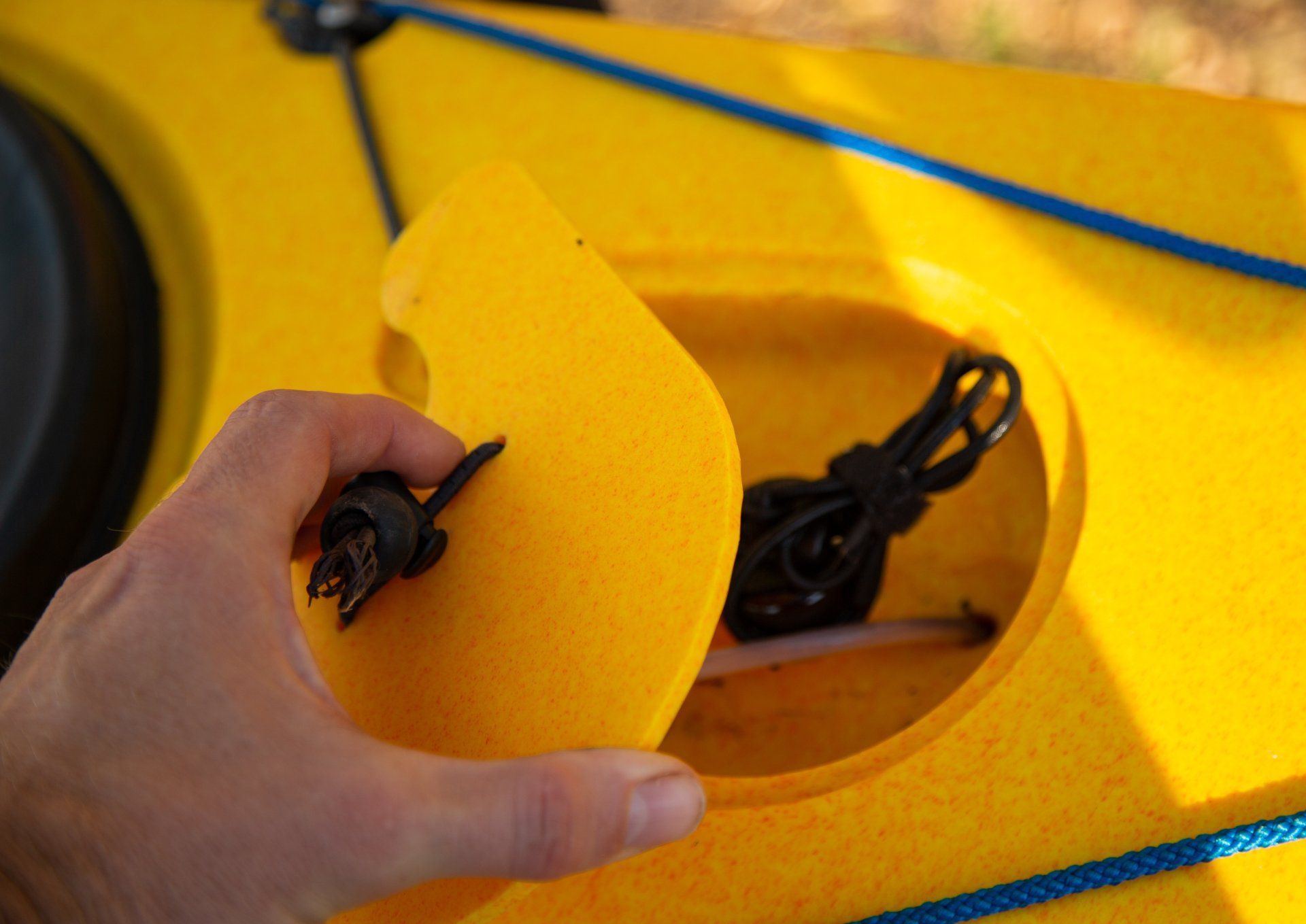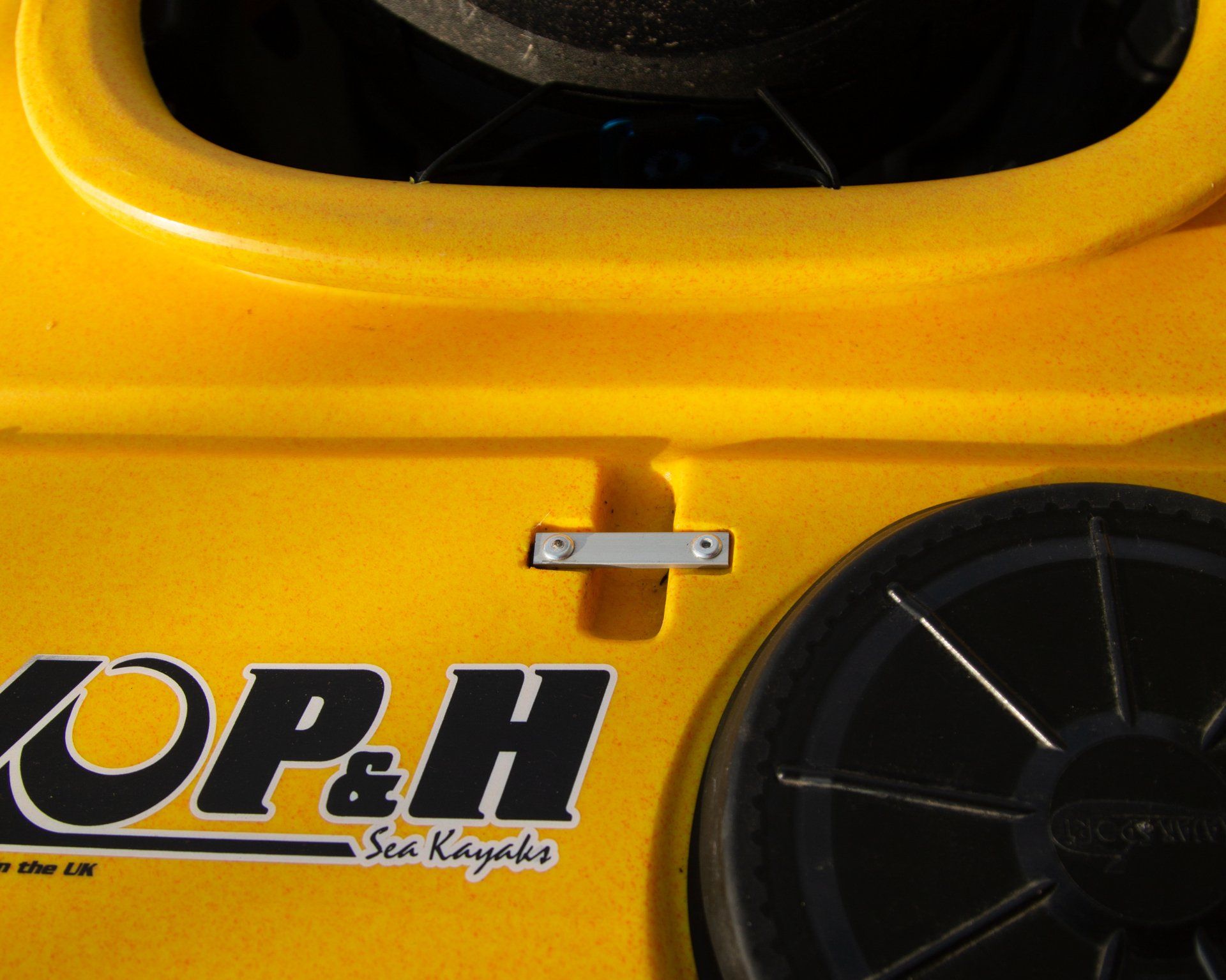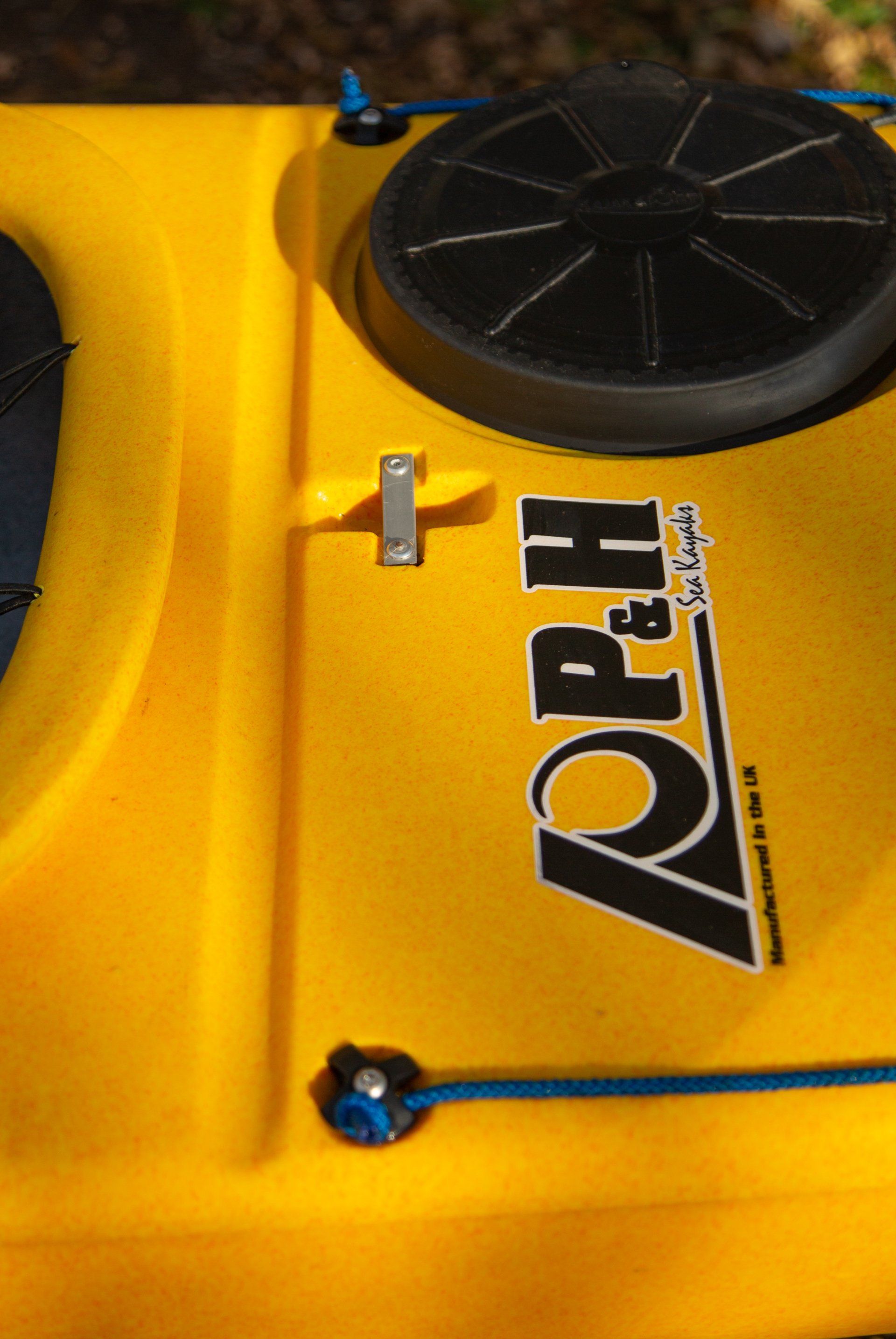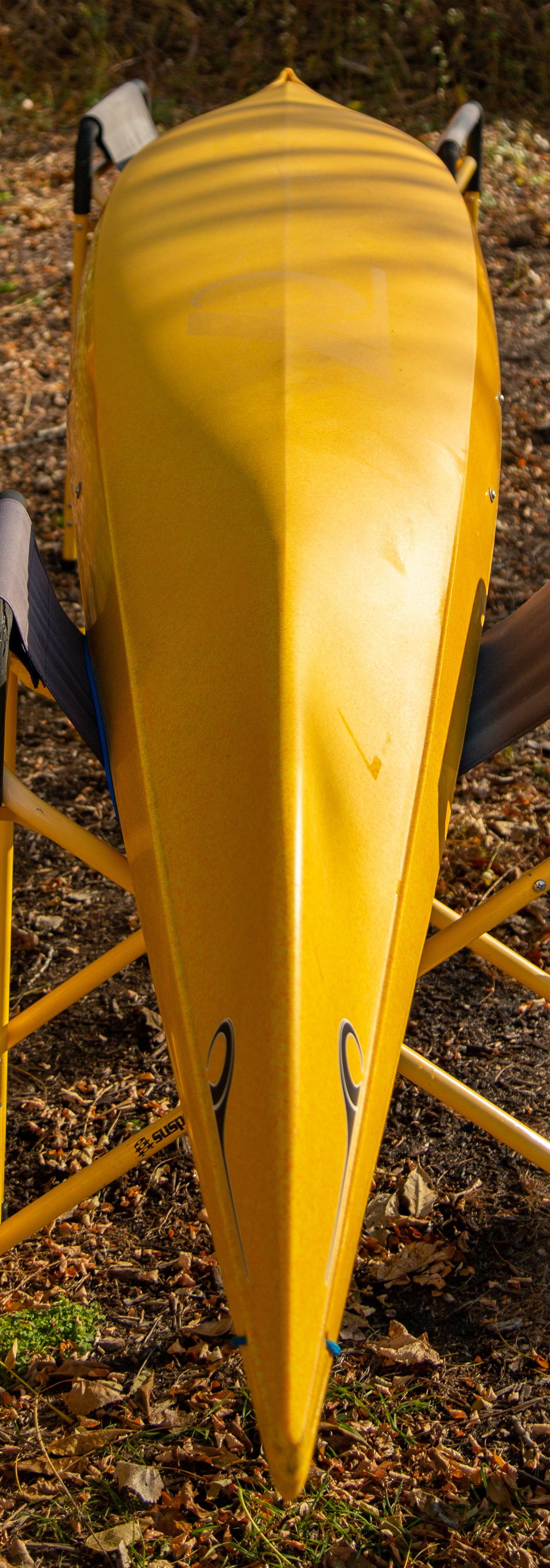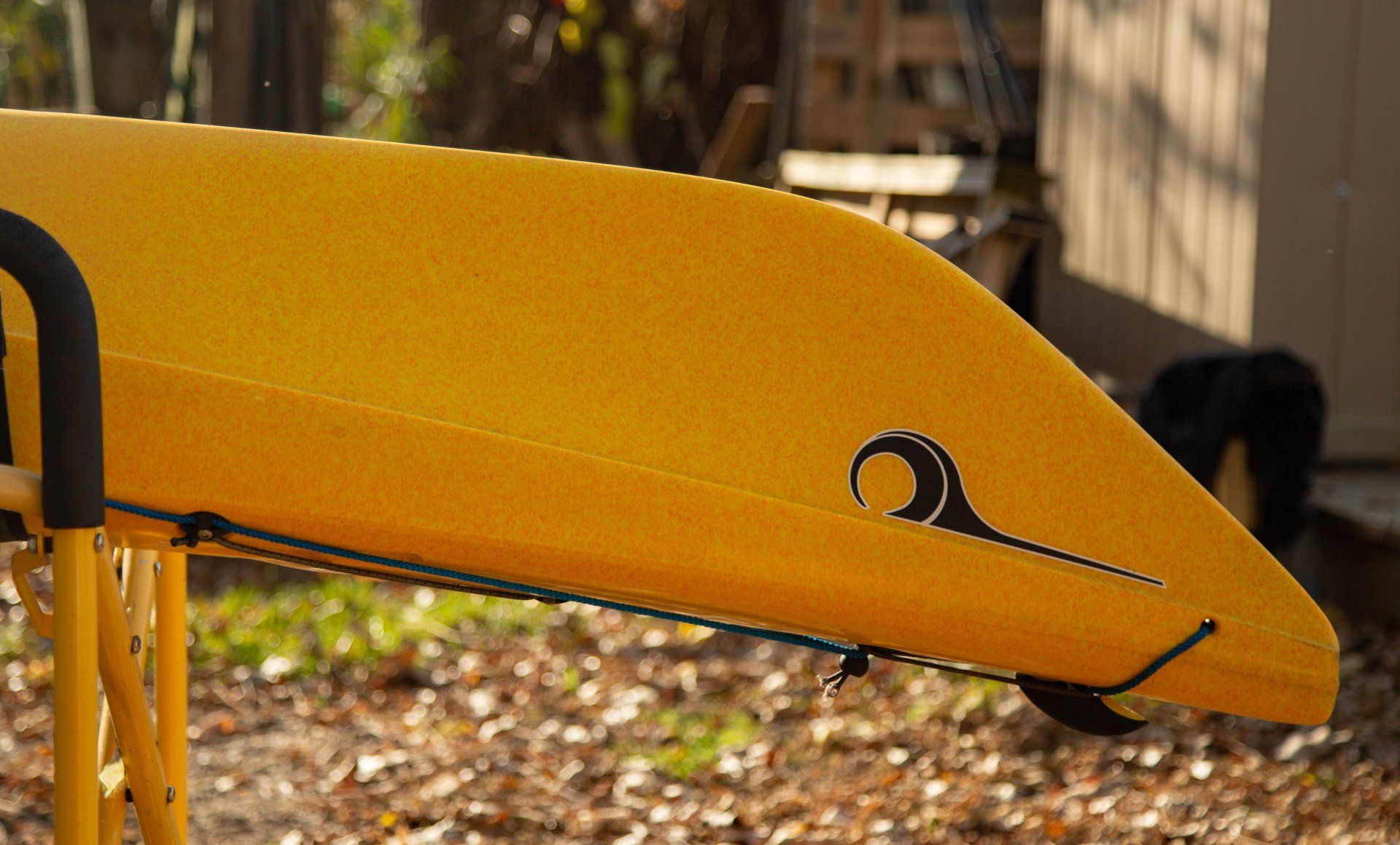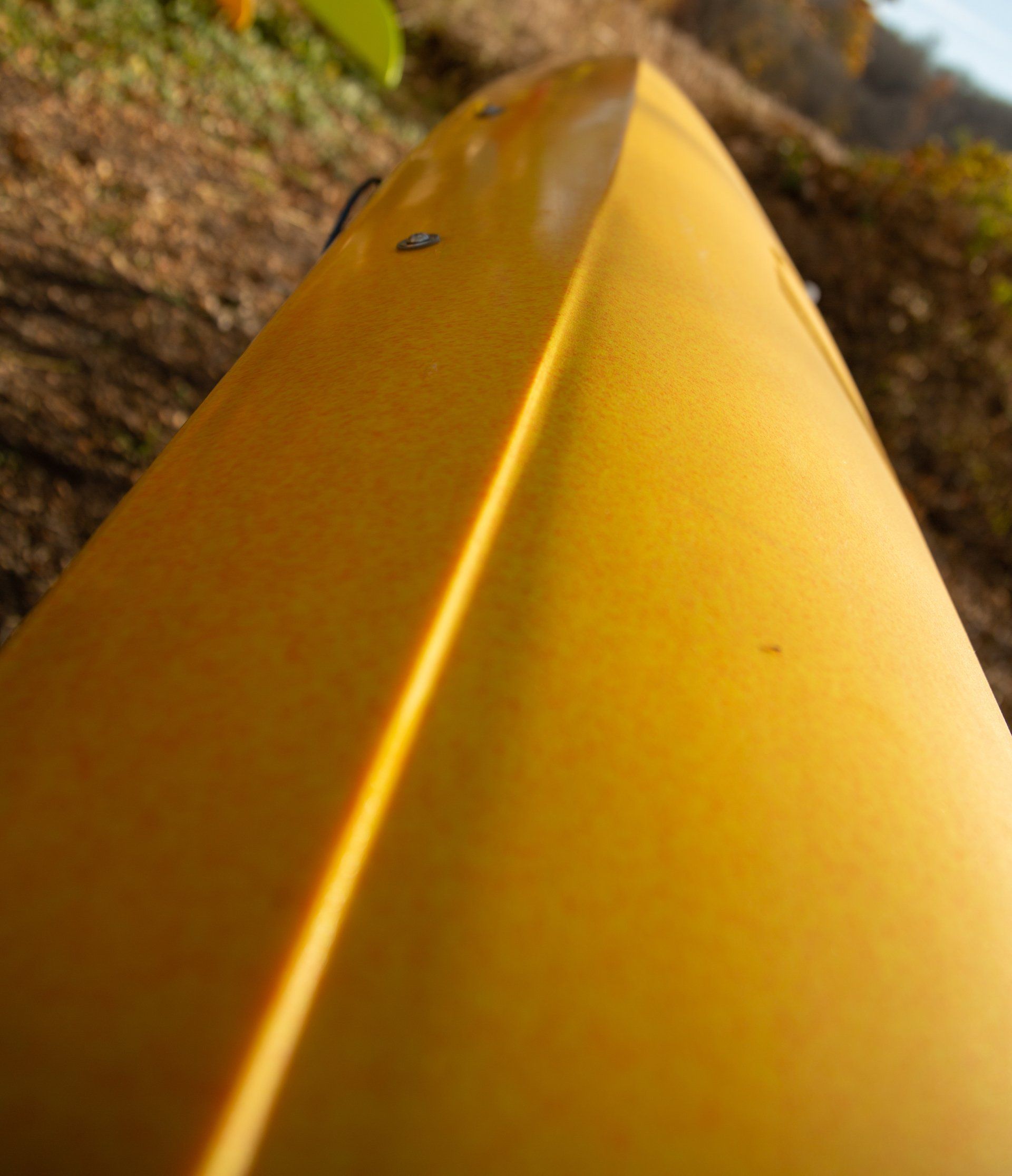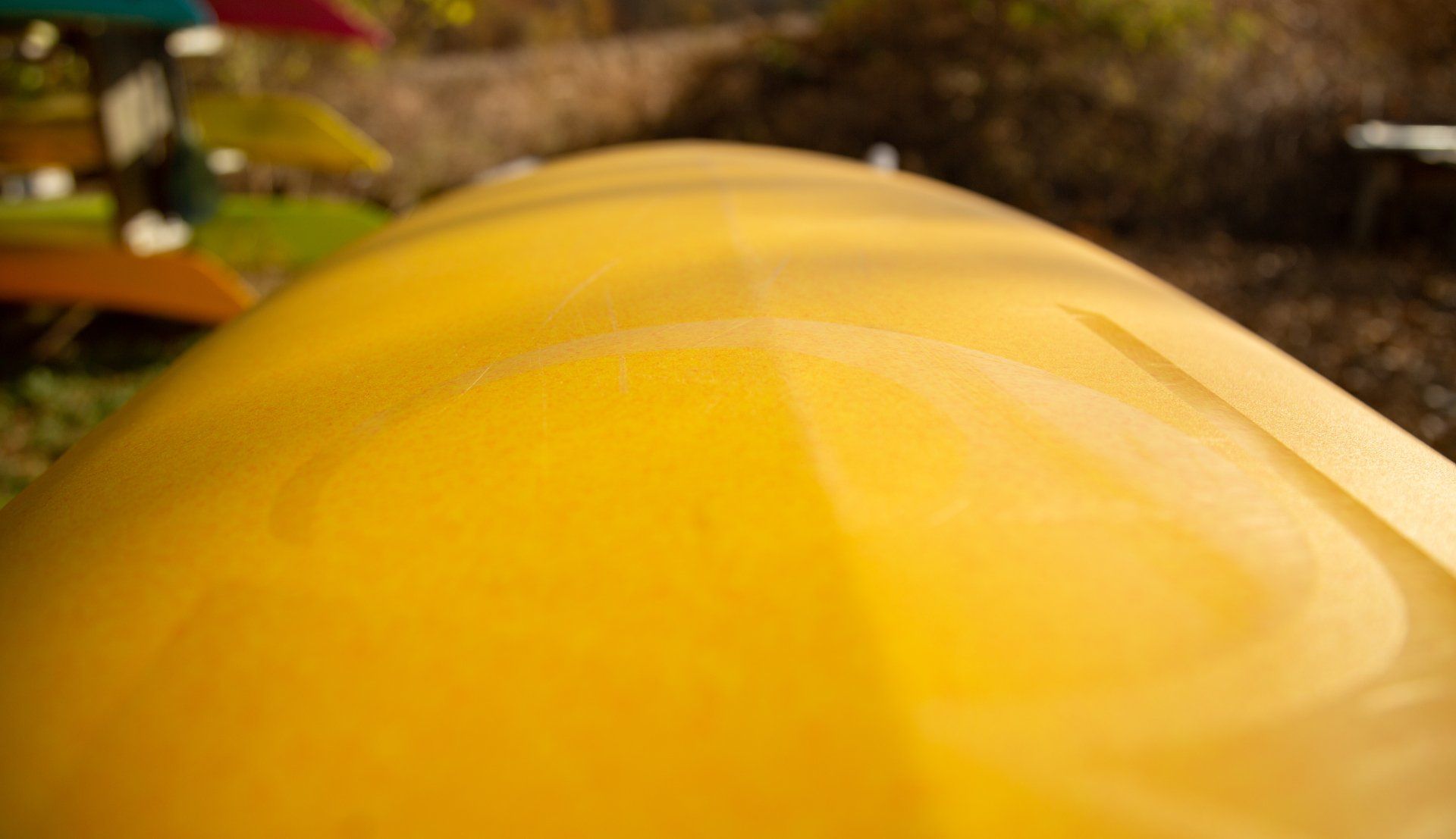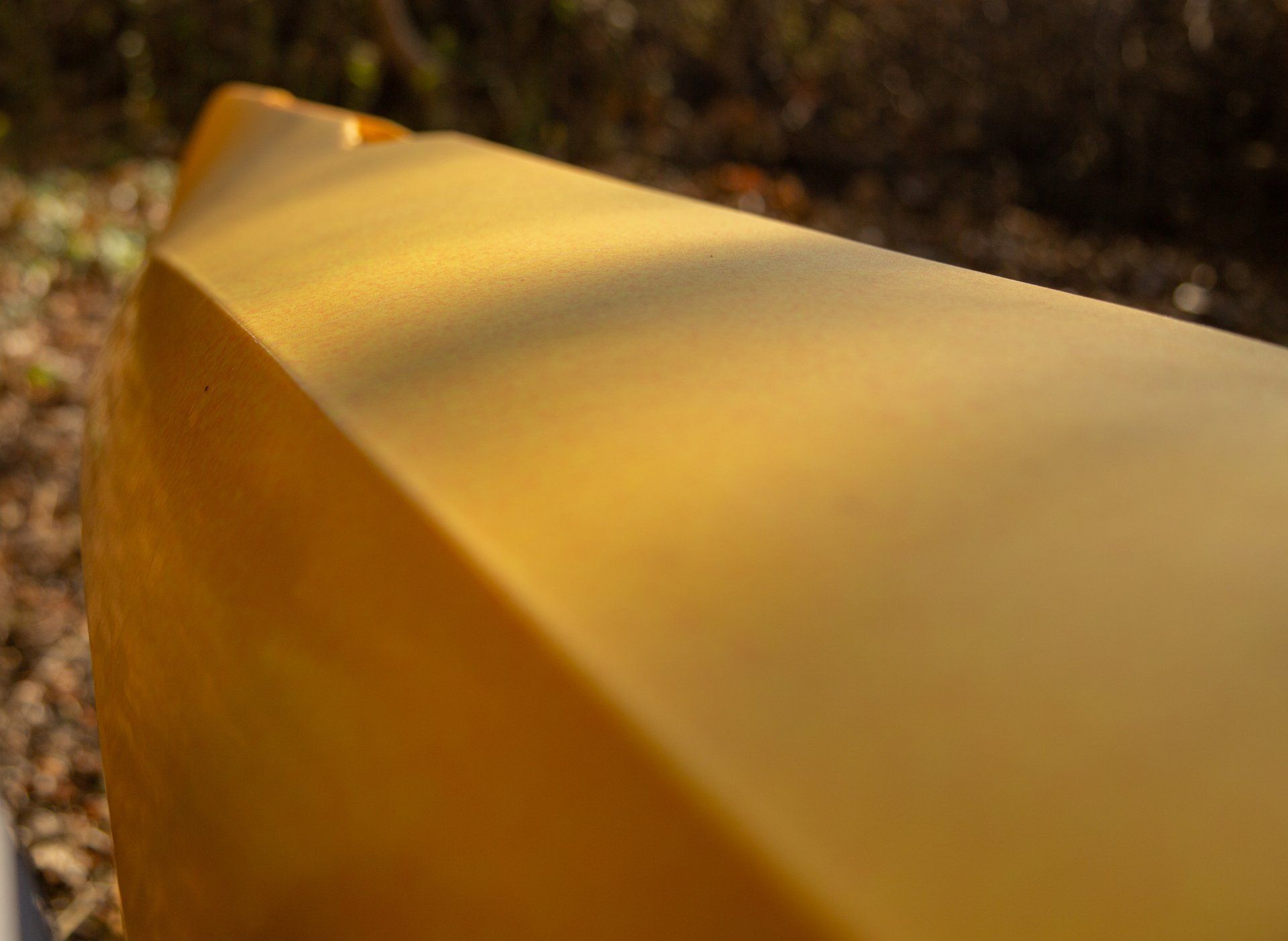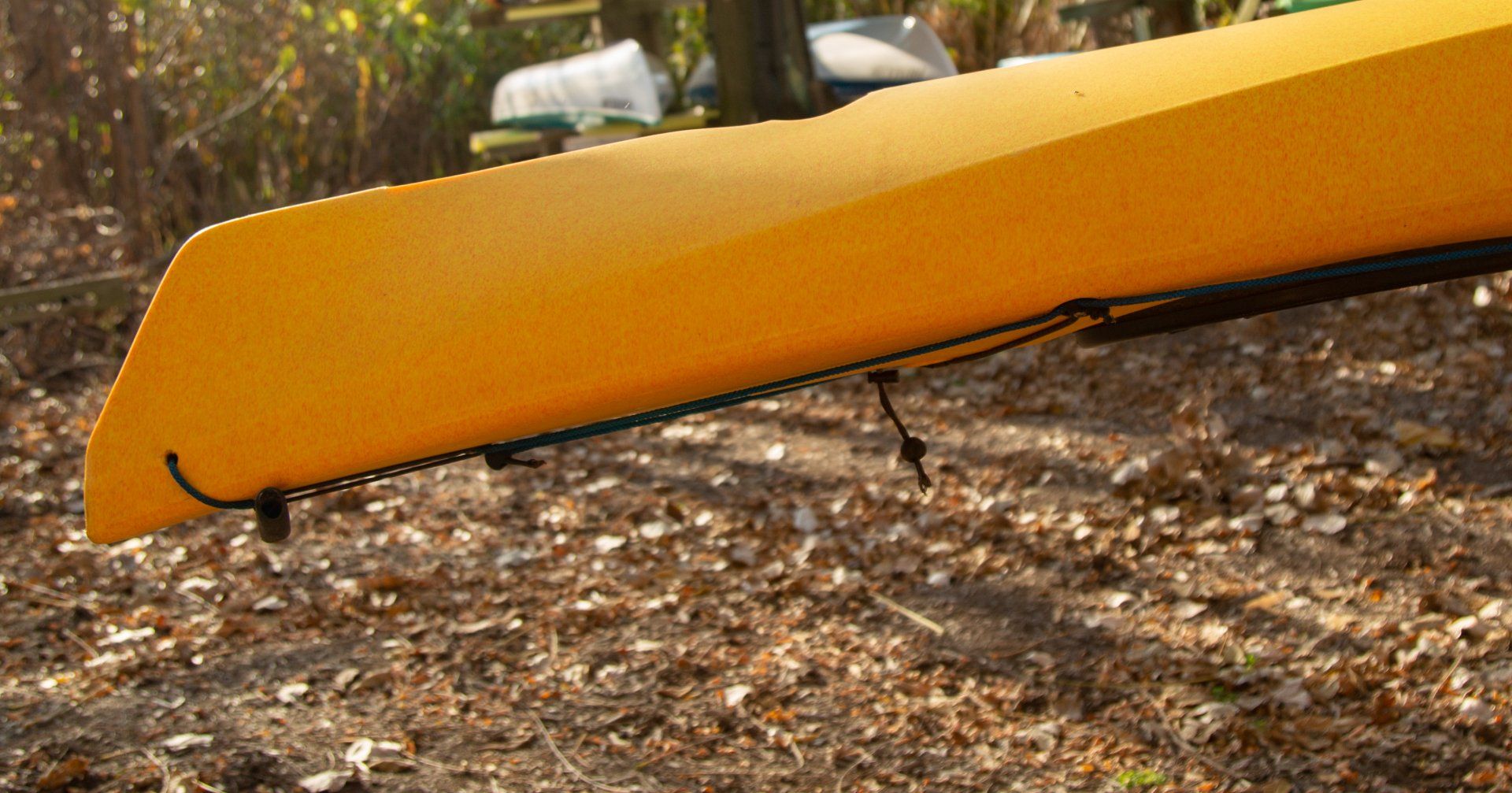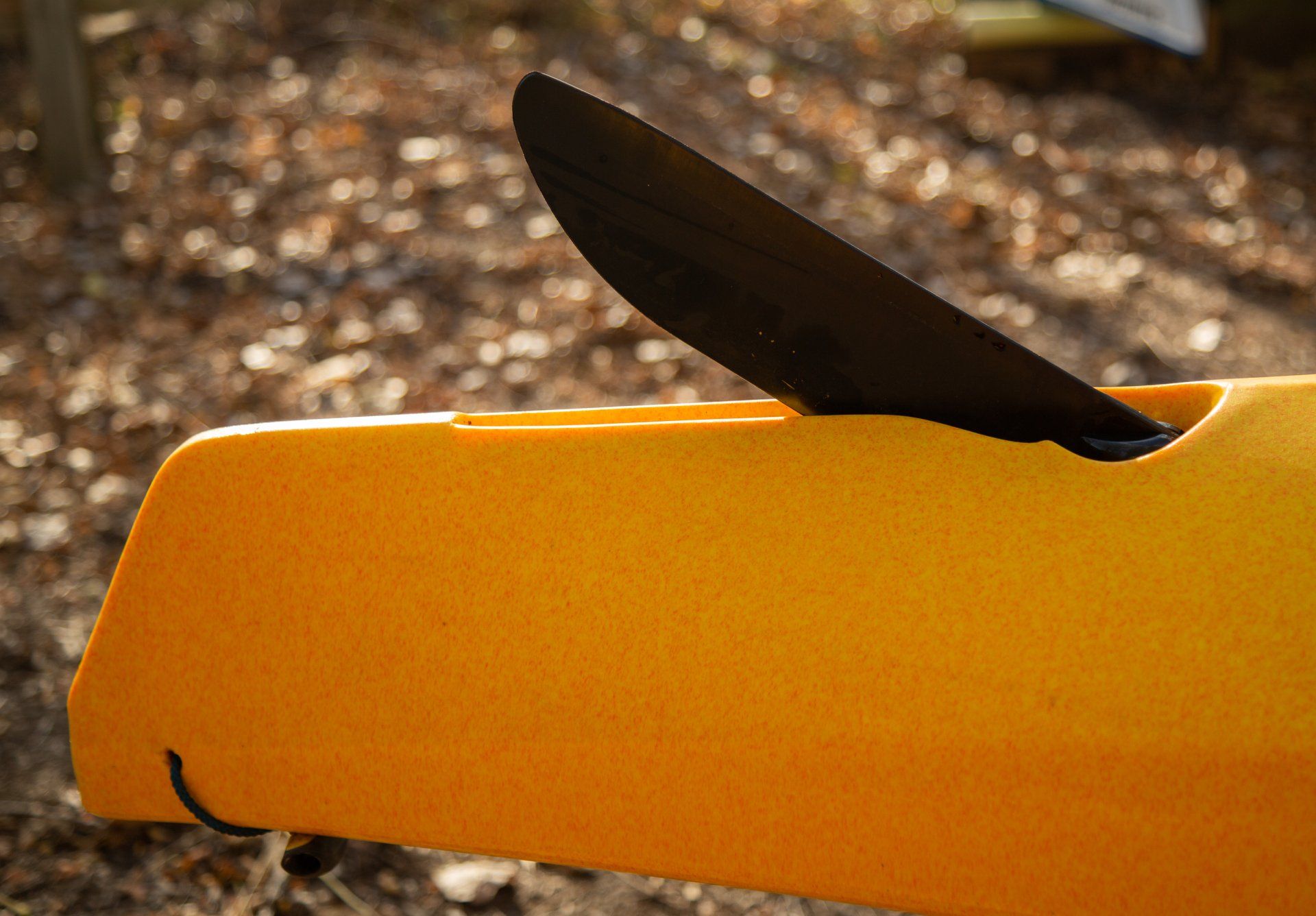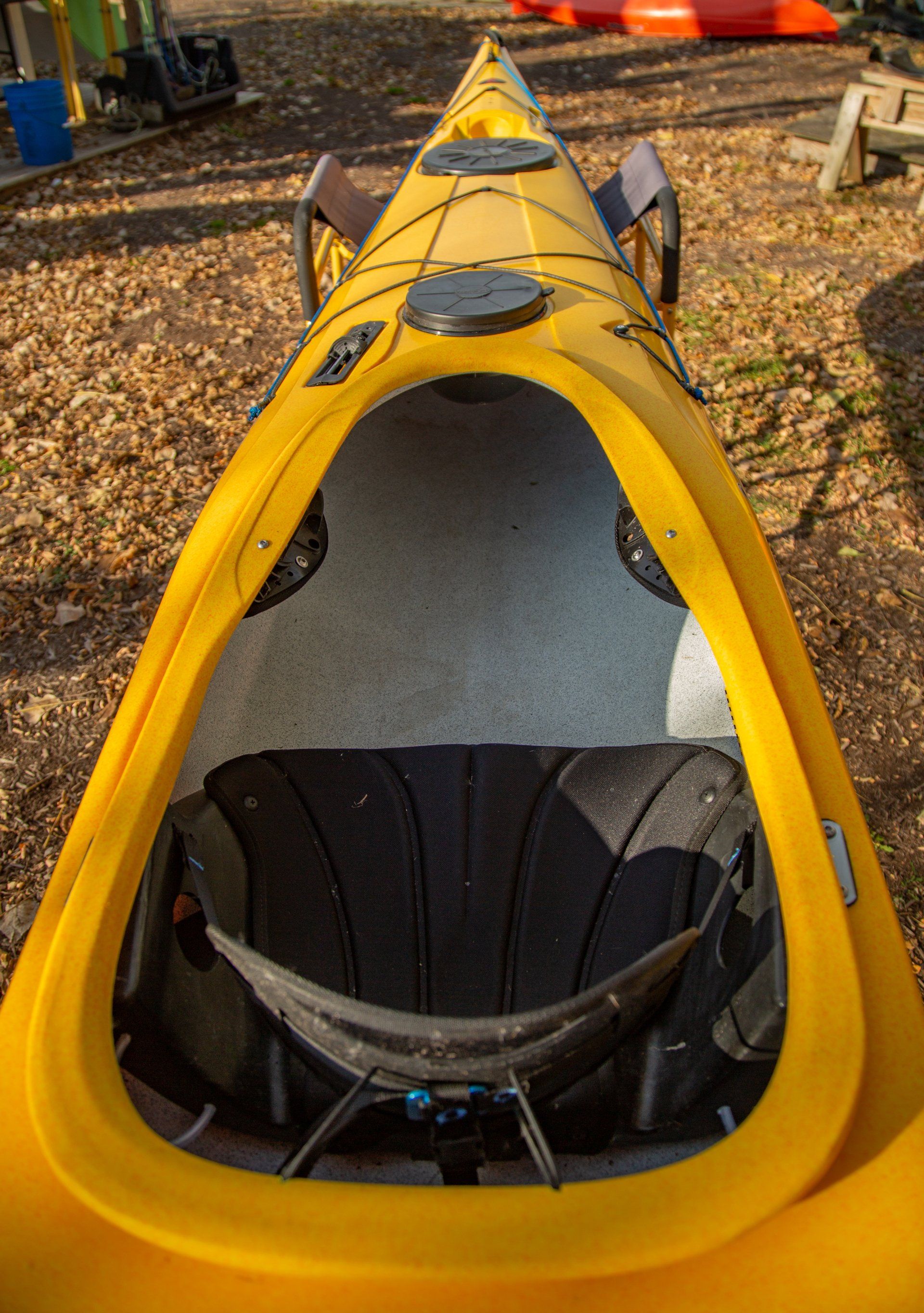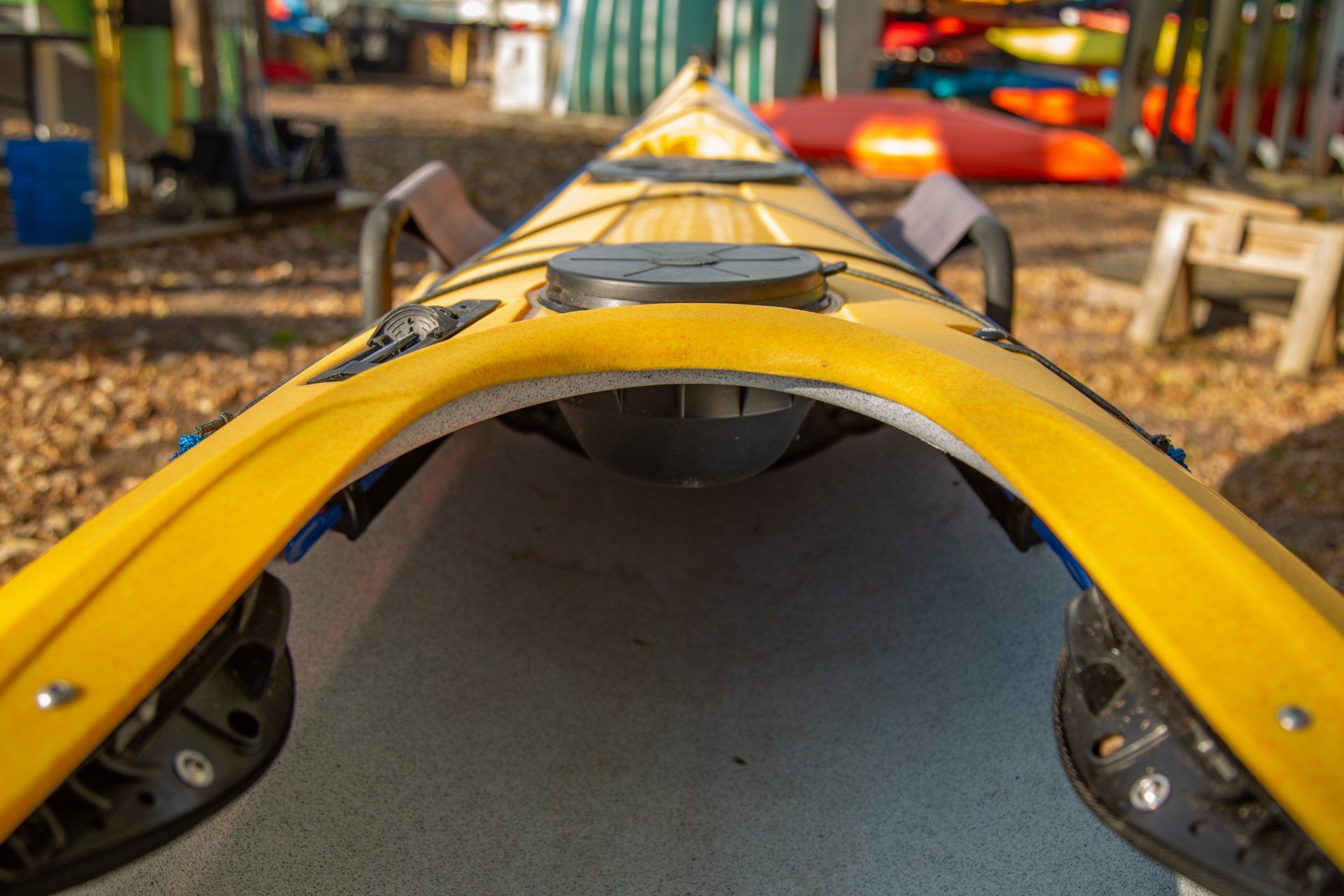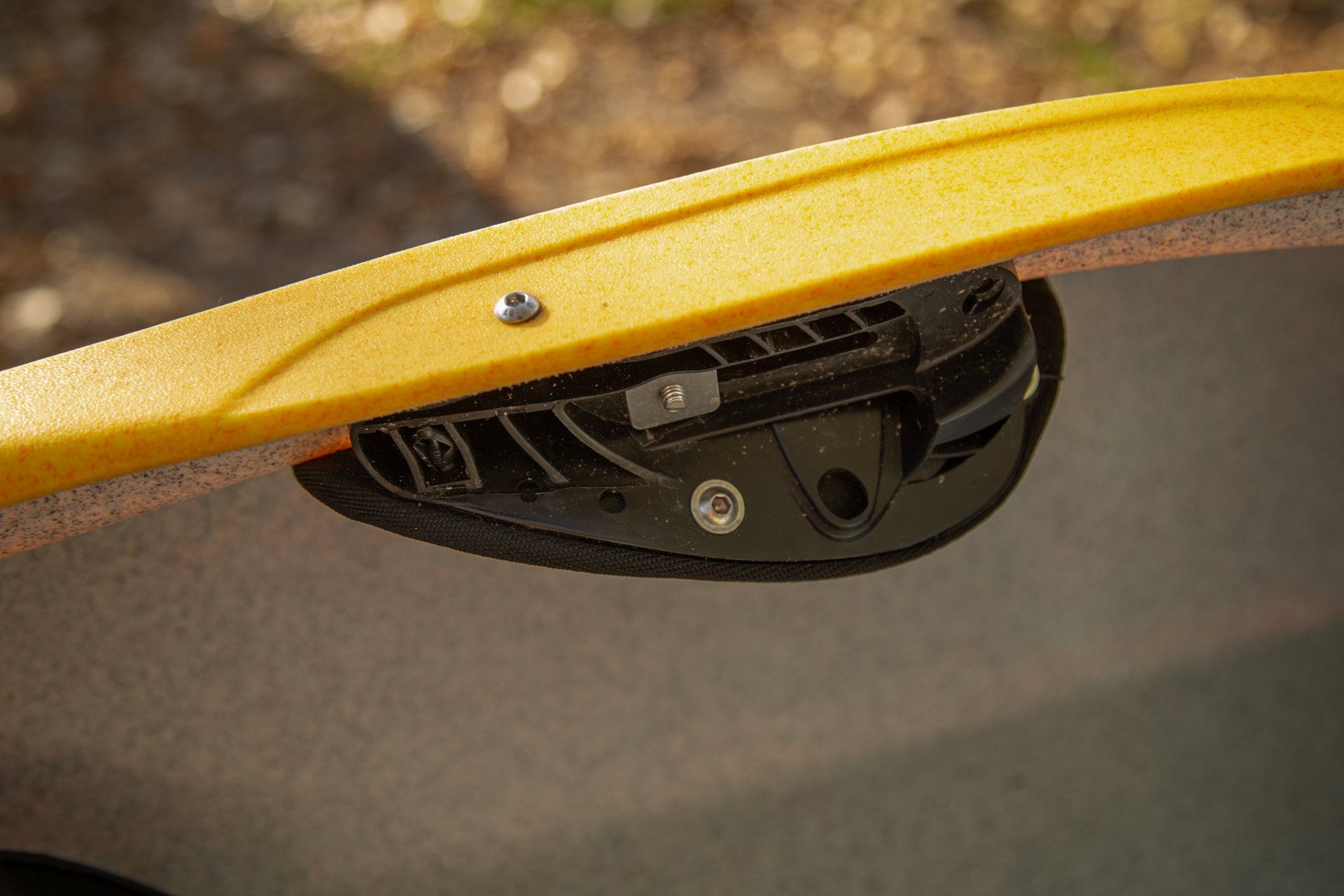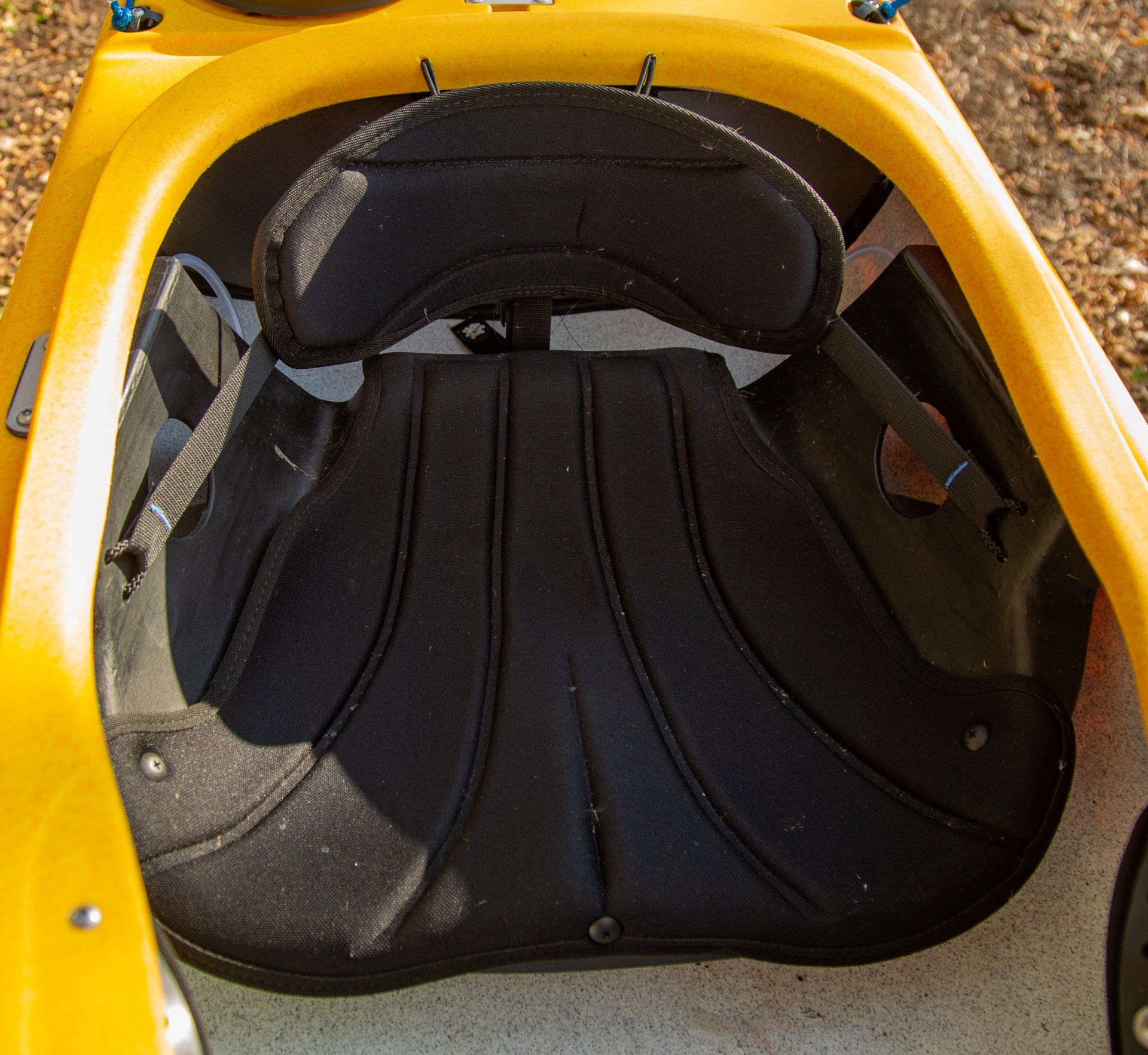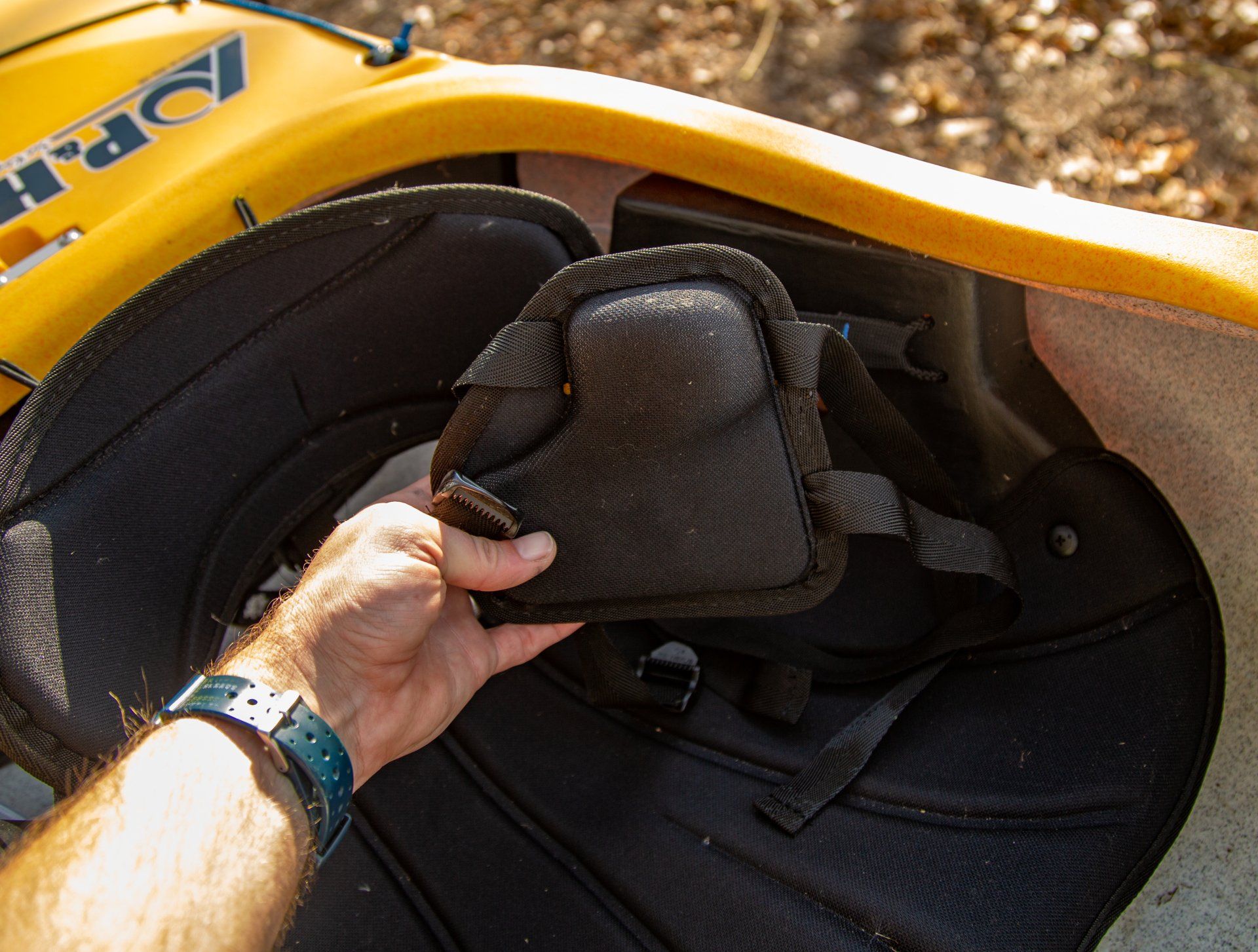P&H Virgo
The P&H Virgo Series (LV, MV, HV)
The P&H Virgo series is a versatile kayak design focused towards technical paddlers looking for a shorter sea kayak or beginner paddlers looking for a boat that their skills can grow into for day and weekend touring.
If you are interested in all the dimensions and specs for this series you can find them by clicking here. This article, however, is focused less on the numbers and specs of the boat and more on describing the features, fit and performance.
So, let's get started...
First Impressions:
At first glance the Virgo looks like a sleek, efficient, fully-featured kayak. When looking at the deck you'll see perimeter decklines and deck bungees with standard "toggle-style" end-grabs. The Virgo also has some specialized features like a 70P marine compass recess, spare paddle shaft recess, and integrated hardware for the P&H kayak sail system. The Virgo features a strategically placed skeg slider control, metal security bar, and a paddle shaft recess directly behind the cockpit for braced paddle entry/exit or paddle float self rescues. There are three (or four as the Virgo HV has a day hatch) industry-standard Kajaksport hatch covers. Finally, at the stern, you'll notice a convenient access hatch for easy skeg maintenance. The boat's aesthetic lines are clean and every feature has a functional purpose.
When you flip the kayak over and look at the hull... Starting from the bow and working towards the stern, you'll first notice a good amount of bow rocker to aid with maneuverability and also help prevent the bow from pearling in wave troughs when paddling in surf and swell. As you move back towards the paddler's station you'll begin to see the emergence of a hard chine to provide a definite transition point between initial and secondary stability. Another advantage of the hard chined hull is the ability to easily carve turns on the face of waves when playing in surf. Once you arrive at the paddling station it is apparent that the hull is pretty flat. This flat hull provides a great
plaining surface for catching rides in waves, but also provides novice - intermediate paddlers with a nice amount of initial stability. This flatter hull combined with the hard chine and relatively vertical sidewall provide the newer paddler with skill building confidence while also allowing more experienced paddlers the ability to push the limits of their skills. Arriving at the stern you'll again notice a good amount of rocker to aid with maneuverability, but not so much that the boat is hard to paddle with proper technique. Also visible when looking at the stern of the hull is the recessed skeg box to accommodate the drop down skeg.
Next let's delve into the paddling station (the cockpit and outfitting). Before diving in too deep this is a good time to talk about the different sizes of the Virgo. There are three: The Low Volume (LV) for smaller paddlers, Mid Volume (MV) for medium sized paddlers, and High Volume (HV) for larger paddlers. P&H has worked very hard to keep the fit similar for each model size paired with the appropriate sized paddler. I am 6'2" with long legs and around 200 lbs. so my description here will be based on my experience with the Virgo HV, but should translate nicely to medium paddlers in the MV and small paddlers in the LV models. When I sit in the cockpit I find that it's nicely sized for a taller paddler and the deck is a comfortable height making it so that I do not feel cramped when sitting in a proper paddling position. I can easily pull one leg out of the cockpit at a time without scraping my shin on the front. The thigh grips provide good contact with the underside of the deck. They are sculpted or curved a bit more aggressively than other day/weekend touring boats but are a familiar standard on many sea kayaks. These thigh grips also have a few inches of front to back adjustability to help fine-tune boat fit.
Now, what I'm sure everyone has been waiting for... the seat! If you are a sea kayaker then you'll be pretty familiar with a sculpted seat pan and back band style lumbar support. If you are looking to upgrade from your recreational kayak with a high back seat you may not be familiar with this more technical seating option. The seating in the Virgo is comfortable and allows for proper efficient paddling technique. The seat pan itself is comfortable, designed with a nice contour
shape that will remain comfortable for any hours. I opt to remove the optional hip pads as I like a slightly looser fit in my boat, but you can leave them in if you prefer a tighter fit. The adjustable back band seat gives the perfect amount of support allowing you to sit up nice and straight without impeding the ability to efficiently rotate your torso. The Virgos come standard with a front deck hatch. This is a small storage space just to the bow of the cockpit. At first glance a lot of folks think that the storage pod under the deck will effect the fit of the boat and make it more difficult to get in and out. In reality, the pod is pretty shallow and placed in a spot where the paddler won't even notice its existence when entering and exiting the boat.
Paddling Performance:
When paddling the Virgo I notice right from the start that the length is manageable. The Virgo series crosses kayak categories. Some folks will refer to it as a short, technical sea kayak geared towards advanced paddlers who don't require a great deal of storage capacity. Other paddlers will view this boat as a nice day/weekend touring boat that will allow their paddling skills to progress.
For a paddler who is upgrading from a recreational kayak, the Virgo is a great option.
Bottom line, this Virgo fits into the Sea Kayak or the Day/Weekend Touring classification very nicely. The Virgo accelerates quickly for an RM Polyethylene boat and when kept flat on its hull tracks nicely. When paddling keep in mind that the stern rocker allows the boat to remain extremely nimble, but also makes it very sensitive to edging or lazy forward stroke technique. If you find yourself rocking from side to side or letting your paddle blade slip past your hip during a forward stroke you are telling the boat to turn and the Virgo will do as it's told. However, with a little work on forward stroke technique the Virgo becomes an efficient hull shape and will easily keep up with boats of equal (or even a bit longer) waterline length. If paddling meandering creeks or rivers the Virgo is right at home. The boat is very responsive to sweep stokes and as you get a feel for using your edges in combination with sweeps you will find it easy to spin the boat with very little effort. Paddling the Virgo out in the surf is FUN! The boat can accelerate quickly to catch rides when surfing swell or shore break. The hard chines give you definite reassurance of where you are in the stability curve of the boat and also make it super easy to carve turns when coming down the face of a wave. All in all, as long as you are not looking for an expedition kayak to carry lots of gear, the Virgo is a really nice choice for a wide range of paddlers.
P&H offers the Virgo with a skeg or their skudder (skeg/rudder) system. For those folks not familiar with a skeg, it is simply a fin that can drop down from the stern of the kayak to aid in keeping the boat straight when paddling in crosswinds or following seas. A rudder is slightly more complex and allows the paddler to maneuver the boat using their footpegs. At BayCreek we opt to only stock Virgos with the simpler rope slider skeg system. As the buyer and head kayak instructor, I view the skudder system as more moving parts that can potentially fail. A skeg keeps it simple and encourages the paddler to use proper technique for control in all but the most demanding conditions.
Construction & Material:
The Virgo is made of an RM (Roto-Molded) Polyethylene material. Generally this material is not associated with lightweight boats. P&H has formulated their own proprietary three-layer RM construction which they call CoreLite X, a polyethylene plastic with a rigid foam core. Because of this three-layer construction, P&H has been able to create a boat that is lighter and stiffer than competing boats from other manufacturers. The main idea behind CoreLite X is that the foam core, sandwiched between two layers of polyethylene plastic, gives the boat the stiffness that is required to provide the hull shape with its desired performance. This material also shaves weight by eliminating some of the heavy plastic that would be needed to make a single-layer boat of the same stiffness. Simply put, more plastic means more weight and CoreLite X gets rid of some of the plastic. CoreLite X has been proven lighter-weight, stiffer and just as rugged compared to other single-layer boats of similar size for a number of years now, so no need to be shy... you can use the boat with confidence!
Managing The Boat Off The Water:
Now that we've discussed material we can talk about the weight of the boat and how it handles off the water, which can be just as important as on-water performance if you must frequently carry and/or car-top your boat. The weight of the Virgo will vary depending on the size you are looking at... P&H lists the weights as follows: (weights taken from P&H's website in fall of 2022)
- Virgo LV - 51 lbs.
- Vigro MV - 56 lbs.
- Virgo HV - 62 lbs
Keep in mind the weights on P&H's website are an average for each size. There will be some variation for each individual boat based on contributing factors such as molding conditions, personnel building on a given day and even color of the boat. P&H does their best to get each boat as close to the average as possible, but molding kayaks is not an exact science.
When lifting the Virgo you may notice that the boat feels a little bit unbalanced (bow heavy). This is a common attribute to "Swede-form" shaped kayaks. The widest spot on the Virgo is located behind the cockpit which is one of the reasons the Virgo performs the way it does on-water, but carrying the boat down to the water and back up to the car may take some getting used to until you find the "balance point" for a comfortable carry. Though these Virgo's are considered lightweight for RM kayaks they are not lightweight kayaks. Depending on the height of your vehicle or storage rack you may need to feel comfortable lifting the boat to shoulder height or maybe even above your head. If this is not easy, it doesn't mean that the Virgo is not a good kayak for you... It may just mean that you need to explore some type of "load assist" roof rack system for your vehicle. If it's not possible for you to carry the boat at all, then it's time to look into a kayak cart or maybe a lighter-weight boat.
Final Thoughts:
To wrap it up, I would say that P&H has hit on a nice versatile boat with the Virgo. With its shorter length and user friendly feel the Virgo is enjoyable and un-intimidating for a novice paddler looking to up their skills. At the same time P&H has incorporated some very technical features which allow an intermediate / advanced paddler to enjoy the boat and not feel held back. The Virgo is nimble, confidence inspiring and fast enough as long as you are not looking to be a competitive racing paddler. The Virgo is right at home on day paddles, shorter multi-day trips and is a blast to paddle in rough water. I encourage anyone looking for a nice kayak to swing by BayCreek and try one out!

About the Author:
Dave Hulburt is the Buyer and Head Kayak Instructor at BayCreek Paddling Center. Dave has been involved in the outdoor industry professionally since 1997 and has been a member of the BayCreek Management Team since 2005.
Sea Kayak
Posts
Day/Weekend Touring Kayak Posts
Solo Canoe
Posts



